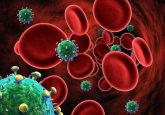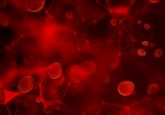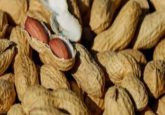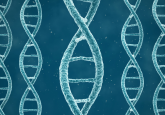A new coat improves transfection

By coating microparticles with minerals, researchers significantly increased the efficiency of chemical transfection of DNA into cultured mammalian cells.

DNA transfection of mammalian cells is a critical tool for both research and therapeutic purposes, and chemical methods of DNA transfection using cationic lipids or polymers has proven to be a popular and flexible approach. These reagents function by complexing with and then condensing DNA it so that it is small enough to be endocytosed by cells. Their positive charge helps overcome the electrical repulsion between the negatively charged DNA backbone and the cell membrane.
Compared to viral and physical methods of DNA transfection, however, chemical transfection methods have poor efficiencies, can be cytotoxic, and work poorly in 3-D cell cultures due to physical barriers that impede access to the interior cells in the cultures. Now, researchers led by William Murphy at the University of Wisconsin-Madison have improved the efficiency of chemical DNA transfection by combining it with the use of mineral-coated microparticles (MCMs).
Plain microparticles help chemical transfection by increasing the interaction of DNA complexes with the cell membrane. Murphy’s team previously demonstrated that they could increase non-viral transfection of primary human cells by using mineral coatings on the cell culture substrate. This suggested that MCMs might better bind to the DNA complexes in solution than uncoated microparticles.
When the team added microparticles coated with calcium phosphate (spiked with sodium fluoride) to plasmid DNA complexed with a cationic lipid (DNA lipoplex), they obtained a four-fold increase in the transfection efficiency of human primary fibroblasts in 2-D culture compared to the soluble DNA lipoplex alone. While part of the increase in transfection efficiency was due to the known binding of DNA lipoplexes by microparticles, the additional increase caused by the mineral coating was not due to increased binding of the DNA lipoplexes by the MCMs compared to the uncoated microparticles, suggesting that some other property of the mineral coating was responsible.
Along with the increase in transfection efficiency, MCM-mediated chemical transfection greatly increased cell viability. At the highest plasmid DNA concentration tested, the use of soluble lipoplex resulted in only 20% cell viability, whereas the addition of MCMs resulted in ~70% cell viability.
MCMs also increased the efficiency of reverse transfection, which is superior to regular transfection for certain difficult-to-transfect cells such as the human embryonic stem cells (hESCs) that they tested, and which involvesd DNA delivery from underneath the cell layer before it attaches to the culture substrate.
For a 3-D cell culture model of cell aggregates formed by centrifugation of cells into agarose microwells, soluble DNA lipoplexes showed poor transfection, as expected. However, when DNA lipoplex–treated MCMs were mixed with the cells before aggregation, the resulting aggregates displayed uniform GFP expression from the transfected construct.
Given the active role played by the mineral coating in increasing chemical transfection efficiency by MCMs, the team plans to examine how the composition of the mineral coating enhances its ability to take up and present DNA lipoplexes during transfection.





